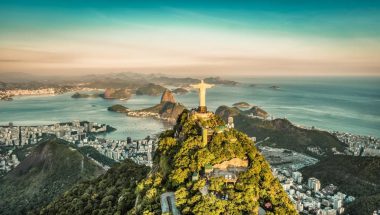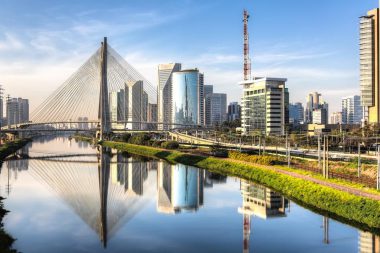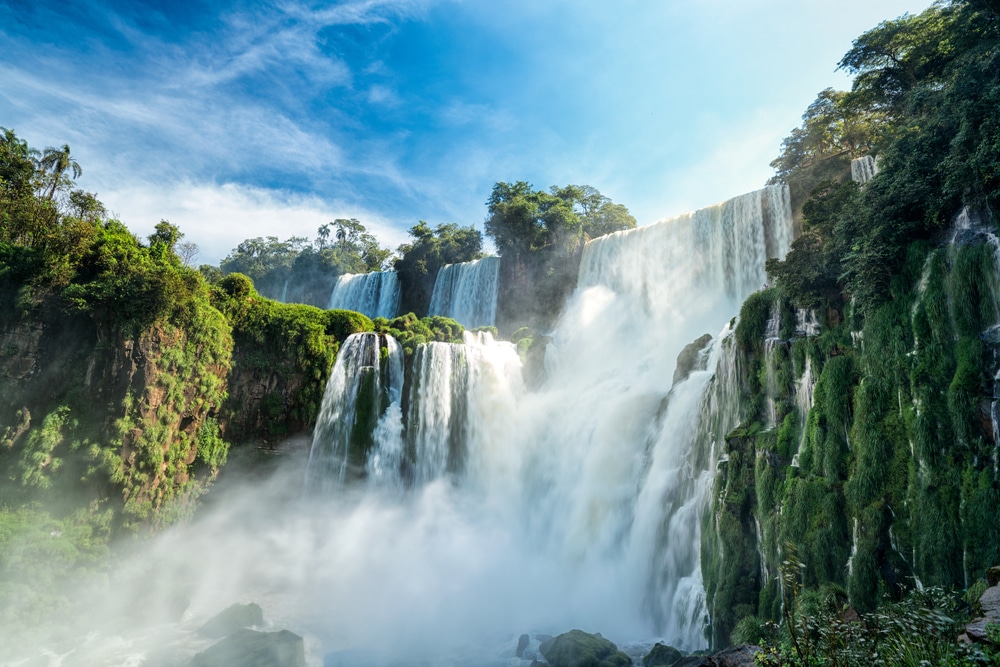“In six days God created the earth – on the seventh day he created Rio de Janeiro. It is the most beautiful city in the world…” There is no shortage of gentle exaggerations among the people of Brazil, even though everyone there knows that no country on our globe can claim to be perfect. And yet: The large country in the south of the subcontinent has long since freed itself from its clichés. It is the largest economy in South America and is certainly a miracle of nature. And that’s why Brazil is still the dream destination for people who explore the world with their eyes open. If you want to understand the country with its more than 140 million people, you should search for the soul of the fun-loving Brazilians. He will also find them in the paradisiacal coastal strips, the samba schools and in the football stadiums. But not only there. Brazil is a country with industry and Indians. A country in the pendulum between light and shadow.
The balancing act between misery and renewal
A holiday in Brazil – this is the somewhat different journey on our planet. The impressive figure of the “Cristo Redentor”, the Redeemer, is enthroned at exactly 709 meters above sea level on the Corcovado and looks down on his people from there. From here, a grandiose perspective opens up with the world-famous Sugarloaf Mountain and the evergreen Tijuca National Park. The sublime Christ, to whom his builders gave a span of 28 meters, is something like a symbol of this region. With its expansive gestures, the figure made of reinforced concrete conveys faith and hope even to the disappointed in this huge city on the Sugarloaf Mountain. Brazil is a country that is sometimes entangled between the protection of its reserves and the raiding of its incomparable forests. It remains to be seen whether the balancing act between misery and renewal will succeed. But since tourism plays an important role in this, one can wish this multi-ethnic state with its young population luck above all.
Rio de Janeiro – Testimonies of the Portuguese colonial era

The majority of tours in Brazil start in Rio de Janeiro. This incomparably beautiful city declared war on the general chaos years ago and has now freed itself from some nightmares. In some areas, the slums have been transformed into neat residential areas, and on the world-famous Praia de Copacabana, civilian “peace police” now monitor that no one leaves a Coke can there after their stay at the beach. But not only the kilometer-long beach of Rio is worth seeing. Insiders prefer to stroll through the bucolic district of Urca, at the foot of the Sugarloaf Mountain. With its picturesque, colourful houses and testimonies to the Portuguese colonial era, the region on the shores of Guanabaro Bay occupies a special position. Many of Urca’s bars offer fried sardines and an ice-cold beer.
São Paulo – The Experiment of Uncoordinated Growth

Even though Rio is something like the gateway to Brazil and undoubtedly a highlight of this trip, the real wonders of the great South American country only begin beyond Copacabana. São Paulo, the financial center of Brazil, presents itself as cosmopolitan and ultra-modern and has always seen itself as a triumph of sprawling and wild growth. Here, the structure of this desert of steel and concrete produced remarkable blossoms. Where the villas of the millionaire coffee barons stand today, the rotten houses of former gold diggers, Indians and slaves once disappeared. In Sao Paulo , it is cramped, hot and full of migrants who live away from those people who can claim to be wealthy. The famous carnival takes place in Bahia and Rio – Sao Paulo is above all the not necessarily successful experiment of uncoordinated growth.
In the footsteps of slaves from Africa
The diversity of Brazil is evident in one less trip to the juggernaut of Sao Paulo. Rather at the Iguacu Falls in the border triangle with Paraguay and Argentina. Well over 1,700 cubic metres of water plunge into the depths per second in a width of four kilometres. “Big water” is what the Indians called this thunderous wonder of nature on the Rio Paraná. If you dare to do it, you should not miss the opportunity to get very close to the waterfalls over a 1200-metre-long footbridge. The price is bearable: you get quite wet from the spray. One of the most exciting stops on a trip through Brazil is undoubtedly Salvador da Bahia. Here, visitors walk in the footsteps of history, as this port city was once the destination of slaves from Africa. Their descendants still shape everyday life in Bahia today – with their traditions, pagan deities and an interesting culture. In the old town, you should take your time to visit the São Francisco Convent. This is a timeless example of the era of the so-called “tropical baroque”.
Booking.com
Brasilia – a metropolis for motorists
Proud of its image as a World Heritage Site – and even more so of its architecture – is the city of Brasilia. It was built on the drawing board, has long been the capital of the country and owes its creation to the ideas of the architect Oscar Niemeyer. He was once mayor of Belo Horizonte and in the fifties of the last century realized the election promise of Brazilian President Juscelino Kubitschek on the Planalto, a high plateau. A city emerged from nothing and became the “playground” of ingenious landscape planners. Anyone who travels to Brasilia from the air today recognizes the axes of a cross or the wings of an airliner on approach. No road is narrow here, but multi-lane – ideal for exploring by taxi. Because Brasilia was not created for pedestrians, but for motorists. Niemeyer, whose ancestors came from Hanover , created his masterpiece with the Praca dos Tres Poderes, the towers and hemispheres of the Congress and Senate.
Amazonia – a treasure trove of life
If you decide to travel to the green infinity of the Amazon region as a holidaymaker in Brazil, you are going to a region that takes most visitors’ breath away. Manaus is the hub of such tours and boasts a remarkable opera house. There, Christoph Schlingenschlaff staged the “Flying Dutchman”. But the adventure begins beyond the city limits. Where there are no paths and where rivers have always been the lifelines of Amazonia. It is the refuge of the Indians who, far away from civilization, live in the Jau National Park, among other places. This is the largest forest wilderness on earth, a catwalk of evolution and at the same time an endangered paradise. The Panatal Marsh and Amazonia are Brazil’s treasure trove of life.


